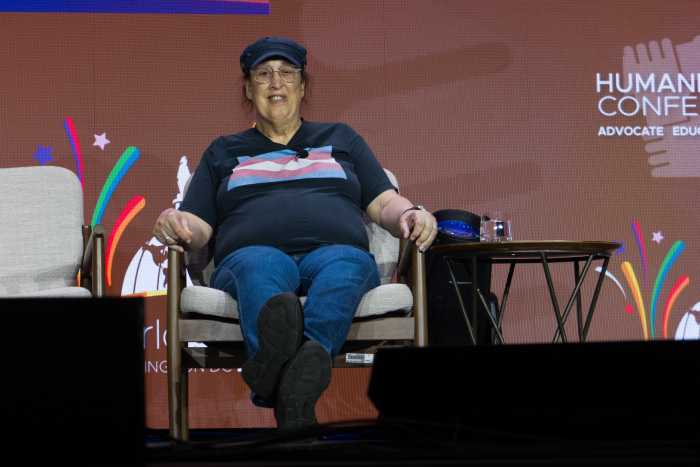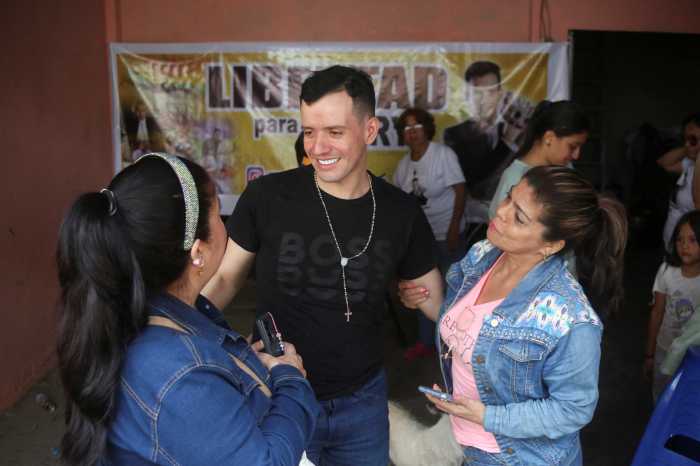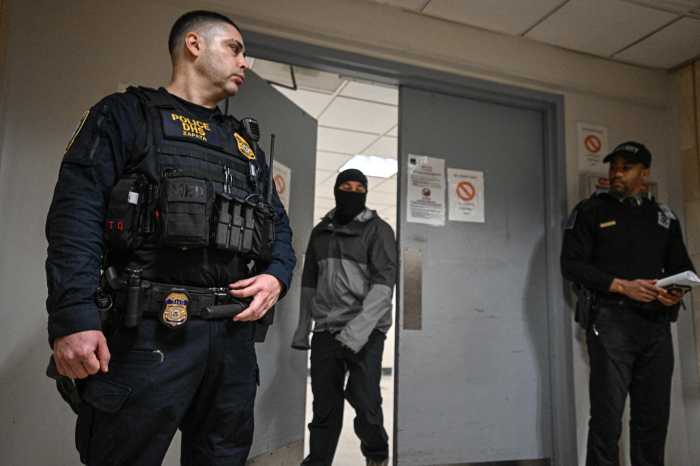As worldwide protests are taking place against the death penalty and criminalization of homosexuality in Iran in the wake of the hanging of two teenage males in the Iranian city of Mashad, new information is coming in from that country casting doubt on the validity of the rape charges the government there used to justify the death sentences.
August 11 has been designated as the day for a series of coordinated demonstrations in France, Ireland, the United Kingdom and elsewhere to protest the hangings of Ayaz Marhoni, 18, and Mahmoud Asgari, who was either 16 or 17 according to press reports.
On the controversy surrounding official claims that the executed youths had sexually assaulted a 13-year-old boy, Afdhere Jama, editor of Huriyah, an e-zine for Queer Muslims, said his contacts in Iran affirm that the two youths hung in Mashad were lovers.
“The first day I found out, I called my Iranian contacts from Huriyah,” Jama said. “All agreed on the fact that these boys were murdered for being queer. One of my contacts who has been to gay parties in Mashad swears the boys were long-term lovers, and another source told me one of the boys’ family members outed the couple.”
Jama also pointed to the increasing difficulty of Iranians getting information out of the country regarding this case.
“The level of surveillance in Iran has reached maximum since the reports of the hanged boys got out,” he said in an interview. “You would be surprised how far I had to go to find out what happened. Can you believe one of my contacts had to dress up as a woman—with full facial nikkhab—also wearing gloves… and go into an Internet cafe… only to use Yahoo Messenger he created right there for only—yes—just a one-minute message to me? He had to travel a day to this Internet cafe to make sure nothing would get back to him. It is that scary. People are rightfully scared for their lives.”
This reporter has also had e-mail correspondence over the last 10 days with the editors in Teheran of an Iranian underground publication for Iranian gays—who asked that neither their names nor the name of their publication be cited, as they are fearful of the heightened repressive atmosphere for gay and lesbian people there. They, too, assert the rape charge was trumped up and that the two executed youths were lovers.
And other anonymous sources in Iran are suggesting the hangings may well have been a legally-disguised “honor killing,” which in Islamic cultures is frequently inflicted by families on their own kin who have engaged in same-sex relations.
This reporter is trying to confirm the reports discussed above with other sources within Iran and inside Mashad.
However, the increased level of surveillance and repression of gay people in Iran since news of the hangings of the two teens reached the outside world and an international outcry was raised against the executions has not only made gays fearful of communicating on this issue, but normally available non-gay sources in Iran have been reluctant to respond to telephone and e-mail inquiries about the hangings, and about whether the “rape” the youths were charged with actually took place.
Janet Afary is a distinguished Iranian scholar in exile and a professor at Purdue University, whose latest book, “Foucault and the Iranian Revolution: Gender and the Seductions of Islam” (University of Chicago Press, co-authored with Kevin Anderson), includes an extraordinary chapter on same-sex relations in Iran. Afary is at work on a new history of sexuality in Iran. The chapter on that topic in her most recent book makes the case that the current regime in the Islamic Republic of Iran is stifling a tradition of homosexual culture that is more than a thousand years old.
For example, she writes that “Classical Persian literature—like the poems of Attar (died 1220), Rumi (d. 1273), Sa’di (d. 1291), Hafez (d. 1389), Jami (d. 1492), and even those of the 20th century Iraj Mirza (d. 1926)—are replete with homoerotic allusions, as well as explicit references to beautiful young boys and to the practice of pederasty…
“Some of the famous love relationships celebrated by classical poets were between kings and male slaves. The beloved could also be the slave of another more powerful person… Outside the royal court, homosexuality and homoerotic expressions were tolerated in numerous public places, from monasteries and seminaries to taverns, military camps, bathhouses and coffee houses. In the early Safavid era (1501-1723), male houses of prostitution (amard khaneh) were legally recognized and paid taxes.”
But under the rule of both the Pahlevi family monarchy and the Islamic Republic in Iran, Afary explained in an interview, professors of literature have been forced to teach that these extraordinarily beautiful gay love poems aren’t really gay at all and that their very explicit references to same-sex love are really all about men and women.
Afary noted that the virulence of the current Iranian regime’s anti-homosexual repression stems in part from the role homosexuality played in the 1979 revolution that brought the Ayatollah Khomeini and his followers to power. In her new book, she and Anderson write: “There is also a long tradition in nationalist movements of consolidating power through narratives that affirm patriarchy and compulsory heterosexuality, attributing sexual abnormality and immorality to a corrupt ruling elite that is about to be overthrown and/or is complicit with foreign imperialism. Not all the accusations leveled against the [the deposed Shah of Iran, and his] Pahlevi family and their wealthy supporters stemmed from political and economic grievances.
“A significant portion of the public anger was aimed at their ‘immoral’ lifestyle. There were rumors that a gay lifestyle was rampant at the court. The shah’s Prime Minister Amir Abbas Hoveyda was said to have been a homosexual. The satirical press routinely lampooned him for his meticulous attire, the purple orchid in his lapel and his supposed marriage of convenience. The shah himself was rumored to be bisexual. There were reports that a close male friend of the shah from Switzerland, a man who knew him from their student days in that country, routinely visited him.
“But the greatest public outrage was aimed at two young, elite men with ties to the court who held a mock wedding ceremony. Especially to the highly religious, this was public confirmation that the Pahlevi house was corrupted with the worst kinds of sexual transgressions, that the shah was no longer master of his own house. These rumors contributed to public anger, to a sense of shame and outrage, and ultimately were used by the Islamists in their calls for a revolution.
“Soon after coming to power in 1979, Ayatollah Khomeini established the death penalty for homosexuality.”
European critics of the Iranian executions are focusing their ire both on the homophobia of the Iranian regime and on its use of the death penalty against youths still in their teens.
In France, a coalition of 20 gay organizations has said that the July 19 hangings of the two Iranian youths for “homosexual acts… illustrates perfectly the policy of repression and homophobic hate which persists in Iran.” The group added that “the execution of two youths who were underage at the time of the ‘crimes’ they were charged with is itself a crime under humanitarian international law, since Iran is a signatory party to the International Conventions on Civil and Political Rights and on the Rights of the Children, which both forbid executions of minors.”
The August 11 French protest demonstrations will be held in Paris in front of the Centre Georges Pompidou.
The coalition planning the Paris demonstration has endorsed an international petition entitled “No Gays to the Scaffold” organized by the French group Ensemble contre la peine de mort (Together Against the Death Penalty.) The petition notes: “Iran, Saudi Arabia, Afghanistan, Mauritania, Sudan, Nigeria (northern states), Yemen, Pakistan, United Arab Emirates are the nine countries where homosexuals risk death penalty, the only motive being their homosexuality.”
In Ireland’s County Dublin on August 11, a demonstration will be held in Blackrock, overlooking Dublin Bay, in front of the Iranian embassy. The call to the Irish demonstration underlines the torture the two hanged Iranian boys were subjected to: “Both boys spent the last 14 months of their lives in police custody where they each received 228 lashes prior to being hung to death.”
In London, a demonstration will be held in front of the Iranian Embassy in Knightsbridge, near the Royal Albert Hall. And in San Francisco, a press conference and demonstration will be held in Harvey Milk Plaza.
In Sweden, in the wake of the hangings, the government has decided to freeze deportation of gay Iranians who’d previously been denied asylum, in response to a campaign by Swedish gay organizations — which held a protest rally August 5 featuring a message from a clandestine Iranian refugee hiding in Sweden. The refugee, Faroush Danahkar, had been condemned in Iran for “illegal relations” and lashed 99 times. His crime? At the age of 17, while at the beach, he had kissed a boy who was one year younger than he was.
Doug Ireland can be reached through his blog, DIRELAND, at http://direland.typepad.com/direland/.


































